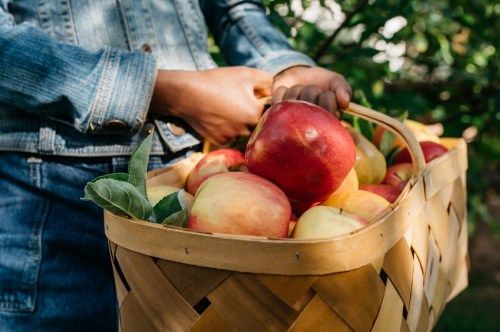Just like doing the wave at a packed stadium, free food can instantly get a crowd riled up… which is exactly how I feel when I encounter a bowl of complementary fruit at a hotel or gym. My go-to are the nutrient-dense apples—I can barely pass an assortment of Granny Smiths without picking up one (or, okay, three) to snack on later in the day. However, when I go to scoop my apple out of my jammed-packed purse hours later, it tends to be a bit bruised and beaten up by the time I get around to actually eating it. And if, say, several days go by before I bob for apples in my bag, those bruises tend to turn into full-on wounds.
Experts in This Article
UK-based food scientist and CEO of Nali Consulting
So, is it safe to eat a bruised apple after it’s been through such a long journey? We spoke with a food scientist to get to the bottom of this all-too-relatable conundrum.
Is it safe to eat a bruised apple, according to a food scientist?
Although you might initially think “yuck” upon seeing a big brown bruise on your Honeycrisp, food scientist Natalie Alibrandi, a London-based food scientist and CEO of Nali Consulting, says a bruised apple isn’t much of a cause for concern (or disgust) at all. “Apples with bruises are perfectly safe to consume—in fact, I encourage eating them rather than throwing them away, which causes unnecessary food waste,” Alibrandi says. This, according to the expert, is because fruit that has turned brown due to oxidation (like a brown avocado) isn’t going to harm you as long as it doesn’t show signs of fungal or bacterial contamination.
On that note, to determine whether the bruising is past the point of no return, Alibrandi recommends checking the surface for signs of spoilage. “The key is inspecting the outside of the apple to ensure it hasn’t been ruptured, which could allow bacterial or fungal growth,” she says.
However, if it does show slight mold growth, Alibrandi says that this doesn’t still mean that it’s destined for the trash bin or a total loss. “If your apple has some mold on it, you should be able to cut the mold off and see if the remaining part of the apple is salvageable,” she says. So, basically, you can still eat the remaining part of the unscathed apple if the mold hasn’t spread to that area.
How to prevent an apple from browning even more
Once an apple gets bruised, it will likely come into contact with oxygen and be prone to spoilage more quickly. To slow down the process, Alibrandi suggests stashing it away from other fruits that emit gasses that expedite the ripening process (and lead to further browning). The high-ethylene-producing fruits she highlights include avocados, bananas, cantaloupe, figs, green onions, kiwi, pears, potatoes, and tomatoes.
Another way to preserve apples even longer is by storing them in a refrigerator.
What can you do with bruised apples?
Aside from noshing on a slightly bruised apple (which, again, is perfectly safe), Alibrandi says you can cook with them, which will help conceal any visible blemishes. “If the apple seems less desirable to eat raw, then it’s recommended to cook the apples and make them into applesauce, pies, or crisp,” she says. What better excuse do you need to bake one of these eight delicious gluten-free apple desserts?
Here’s the new apple of your eye:
Sign Up for Our Daily Newsletter
Get all the latest in wellness, trends, food, fitness, beauty, and more delivered right to your inbox.
Got it, you've been added to our email list.











